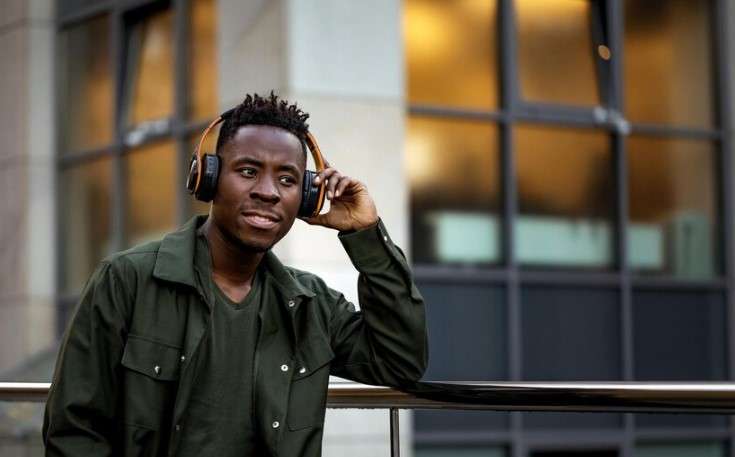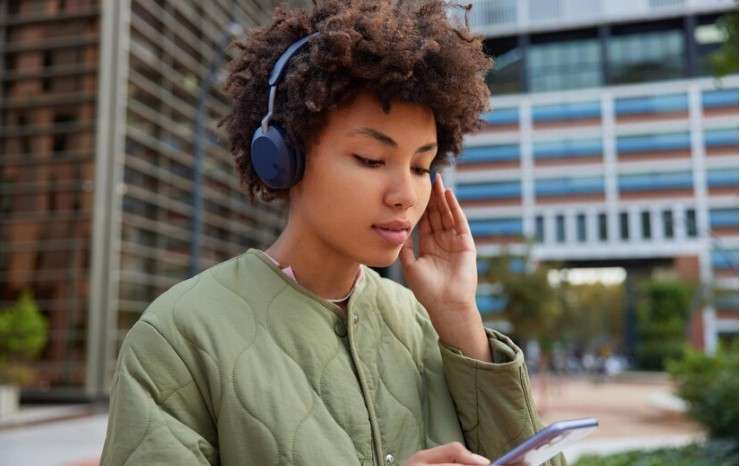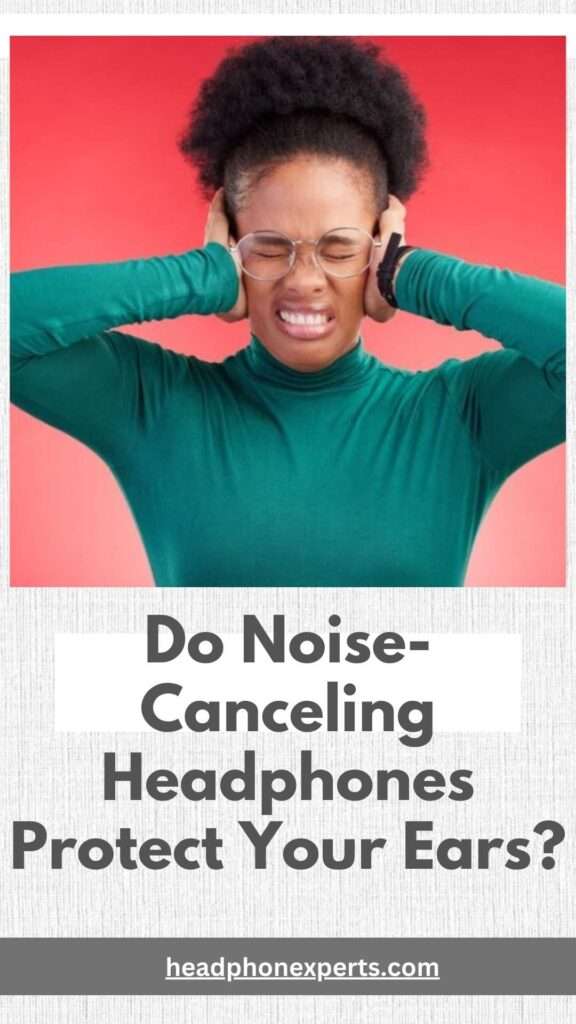How Effective Are Noise-Canceling Headphones in Protecting Your Ears? As noise-cancelling headphones continue to gain popularity due to their capacity to filter out sounds from the environment, concerns have been raised about the potential impact that these headphones may have on the health of the ears.
Despite the fact that these headphones are particularly effective at lowering background noise, the protection they provide to the ears encompasses more than just the isolation of sound.
It is essential for users who are interested in both auditory immersion and long-term hearing preservation to have a solid understanding of the mechanisms that are responsible for noise cancellation and the consequences that it has for ear safety.
The Essential Guide to Noise Canceling Headphones
1.How Noise-Canceling Headphones Work

Noise-canceling headphones are a marvel of modern technology, providing consumers with an immersive audio experience by actively minimizing undesirable background noise. They accomplish this using a combination of sophisticated technology and innovative signal processing techniques.
Microphones: Noise-cancelling headphones have external microphones strategically placed on the ear cups. These microphones continuously collect up ambient noises such as background noise, conversations, and traffic.
Noise Analysis: An inbuilt CPU or microcontroller analyzes the gathered sound data in real time. This technique helps to determine the frequency and magnitude of ambient noise.
Anti-Noise Generation: Once the noise profile has been determined, the headphones produce an anti-noise signal that is exactly identical in magnitude but opposite in phase to the ambient noise. This anti-noise signal is created by the internal circuitry of the headphones.
Cancellation: The anti-noise signal is then sent to the headphones’ speakers, together with the audio playback signal from the audio source (such as a smartphone or music player). When these two signals merge, they effectively block out ambient noise, creating a calmer listening experience.
Adaptive Algorithms: Many current noise-canceling headphones use adaptive algorithms to continuously update the anti-noise signal in response to changes in the surrounding environment. This enables optimal noise suppression effectiveness in a variety of settings, whether on an airline, at a noisy cafe, or while walking down a busy street.
Passive Isolation: Noise-canceling headphones frequently include over-ear or in-ear designs that enable passive isolation by physically blocking out some ambient noise before active cancellation occurs. The mix of active and passive noise reduction creates a more immersive listening experience.
Battery Power: Because noise-canceling headphones require more processing power to detect and counteract ambient noise, they often run on built-in rechargeable batteries. The battery life varies based on the amount of noise cancellation, volume level, and the effectiveness of the headphones’ electronics.
Overall, noise-canceling headphones provide users with a sound sanctuary in noisy places, allowing them to listen to their favorite music, podcasts, or movies without being distracted. Their revolutionary technology is always evolving, pushing the limits of what is possible in the world of personal audio.
2. Noise-Canceling Headphones and Hearing Loss

When used properly, noise-canceling headphones can be extremely beneficial to your hearing health. These revolutionary devices are intended to minimize ambient noise, allowing users to enjoy music or audio content at lower volumes, potentially reducing the risk of hearing damage.
Noise-canceling headphones allow consumers to listen at lower volumes while maintaining audio quality and clarity. This is especially useful in locations with a high degree of background noise, such as while traveling or in congested urban areas.
Instead of increasing the volume to drown out external sounds, users can utilize the noise-canceling feature to create a quieter listening experience, lowering the risk of overexposure to loud stimuli.
Furthermore, noise-canceling headphones can improve the listening experience by removing distractions and allowing users to focus completely on the audio content they want to hear. Whether it’s deep music, podcasts, or audiobooks, being able to filter out external noise can make listening more comfortable and fulfilling.
However, it is critical to use noise-canceling headphones carefully in order to avoid any detrimental impacts on hearing health. Even with noise-canceling equipment, prolonged exposure to loud decibels can be harmful to one’s hearing. As a result, it is critical to stick to appropriate volume levels and take pauses during extended listening sessions.
Users should also be aware of their surroundings when wearing noise-canceling headphones, particularly in situations where awareness of external sounds is critical for safety, such as walking, riding, or driving.
Many noise-cancelling headphones include transparency settings, which allow users to hear ambient sounds when necessary, achieving a balance between audio immersion and situational awareness.
Finally, noise-canceling headphones can be an effective way to protect your hearing while also improving your listening experience.
Users can enjoy the benefits of noise-canceling headphones without jeopardizing their long-term auditory well-being if they utilize the device properly and are aware of their surroundings and volume settings.
3. Benefits of Noise-Canceling Headphones

Noise-cancelling headphones have numerous benefits that improve your listening experience and general well-being. Here’s a more detailed look at the advantages:
Noise-canceling headphones provide an immersive audio experience by actively minimizing external noise. You may enjoy the subtle subtleties of your audio content without interruption, resulting in a more enjoyable listening experience.
Enhanced Focus and Productivity: Whether you’re working in a noisy workplace, studying in a bustling cafe, or attempting to concentrate in a crowded office, noise-canceling headphones can help you stay focused by blocking out distractions. This can result in increased productivity and efficiency in your tasks.
Protecting Hearing Health: Constant exposure to loud noises can harm your hearing. Noise-canceling headphones help to reduce this risk by lowering the volume required to drown out extraneous sounds. This increases safer listening levels, ensuring your long-term auditory health.
Stress Reduction & Relaxation: After a hard day, escaping into your own world of music or soothing noises can help you unwind and de-stress. Noise-canceling headphones offer a serene environment, allowing you to relax deeper and enjoy moments of tranquillity wherever you are.
Improved Travel Experience: Whether you’re flying, traveling a noisy train, or driving, noise-canceling headphones can make your experience much more comfortable. They turn journey time into an opportunity for relaxation or amusement by drowning out engine roar, chatter, and other ambient noises.
Improved Sleep Quality: Some noise-canceling headphones provide sleep-specific capabilities, such as white noise or calming noises, that help to disguise disruptions. These headphones can help you fall asleep faster, remain asleep longer, and have more pleasant nights, particularly in noisy situations or while traveling.
Clearer Communication: Many noise-canceling headphones include built-in microphones and powerful audio processing technologies that improve the clarity of your speech during phone calls or video conversations. This ensures that your message is crisp and clear, even in noisy environments.
Versatile and convenient: Noise-canceling headphones are flexible companions for a variety of activities, including exercise, gaming, work, and leisure time. Their wireless connectivity and excellent battery life make them useful additions that fit easily into your routine.
4.Drawbacks of Noise-Canceling Headphones

Noise-canceling headphones provide a variety of benefits, including immersive audio experiences and improved focus in busy surroundings. However, as with any technology, there are certain downsides. Here are some potential problems of noise-canceling headphones, as well as solutions to lessen or overcome them:
Pressure Sensation: When using active noise-cancelling headphones for an extended period of time, some users may feel a minor pressure or discomfort. This sensation is created by the headphones’ noise-cancelling technology, which creates an opposite pressure to external sounds.
To address this, manufacturers have improved the shape of ear cups to give a more comfortable fit, as well as incorporated features such as customizable noise canceling levels.
Sound Quality Trade-offs: In some circumstances, noise-canceling headphones may sacrifice sound quality, particularly in lower-cost models. The technology used to block out extraneous noise may interfere with the headphone’s ability to reproduce sounds accurately.
However, advances in audio engineering and noise-cancelling algorithms have considerably reduced this problem in premium models. Choosing trusted manufacturers and reading reviews can help customers find noise-canceling headphones with high sound quality.
Depending on batteries or power: Active noise-canceling headphones require power to use their noise-canceling capability. This means that consumers must maintain their headphones charged or replace the throwaway batteries on a regular basis.
For tourists, this could mean having to remember to charge or bring extra batteries. To address this, several manufacturers now provide long battery life and even speedy charging options, allowing customers to enjoy longer usage times with less downtime.
Cost: High-quality noise-canceling headphones might be more expensive than conventional headphones. While regular travelers or those who work in noisy areas may find the cost worthwhile, casual users may not.
However, the market provides a variety of alternatives at different price ranges, allowing consumers to strike a balance between budget and functionality that meet their requirements.
Effectiveness in Specific Situations: While noise-canceling technology shines at eliminating persistent low-frequency sounds such as jet engines or air conditioning units, it may be less effective at canceling out sudden or sharp noises such as individuals speaking loudly nearby or a door closing.
Furthermore, some users may want to be aware of their surroundings, making noise-canceling headphones less appropriate for scenarios requiring situational awareness, such as outdoor activities or traveling in congested urban areas.
5. How to Choose the Right Noise-Canceling Headphones

Choosing the correct noise-canceling headphones can considerably improve your listening experience, whether you’re a music lover, a frequent traveler, or someone who simply enjoys some peace and quiet. Here’s a detailed guide that will help you make an informed decision:
Identify your needs. Consider where and how you’ll be using your headphones. Are you seeking for anything to block out background noise on your everyday commute, or do you require high-quality audio for studio projects? Understanding your individual requirements can help you choose the best solutions.
There are two types of noise cancellation: passive and active. Passive noise cancellation uses the physical architecture of the headphones to block out external sounds. Active noise cancellation (ANC) uses built-in microphones and processing algorithms to cancel out ambient noise. Determine which type best fits your preferences and environment.
Sound Quality: Look for headphones that not only effectively eliminate noise but also produce excellent sound quality. A balanced frequency response, clear highs, mids, and deep bass provide an immersive listening experience across a wide range of music and audio content.
Comfort & Fit: Comfort is essential, especially if you intend to wear your headphones for long periods of time. Choose models with comfortable ear cushions, adjustable headbands, and lightweight designs to reduce fatigue. Consider the earcup size and shape to guarantee a good seal and maximum noise isolation.
Battery Life: If you’re thinking about getting wireless noise-cancelling headphones, consider the battery life. Longer battery life allows for uninterrupted listening sessions, especially during long flights or commuting. Some models provide quick charging options for extra convenience.
Connectivity choices: Evaluate the headphones’ connectivity choices. Bluetooth connectivity allows for wireless independence, whilst wired solutions are suitable in situations where wireless connections are unstable or restricted. Look for headphones with simple pairing and reliable connectivity.
Explore the additional features provided by various models. Touch controls, customized EQ settings, built-in voice assistants, and connection with virtual assistants such as Alexa or Google Assistant are all possible options. These characteristics can help improve usability and convenience.
Brand Reputation and Reviews: Look into the reputation of various headphone brands and read reviews from both professionals and customers. Established companies have a history of providing high-quality items, but emerging brands may provide innovative features at competitive rates. Pay attention to user feedback on durability, dependability, and customer service.
Budget considerations: Create a budget based on your needs and prioritize features accordingly. While expensive noise-canceling headphones may provide top-tier performance, there are also low-cost choices that offer adequate noise cancellation and music quality.
Try Before You Buy (if possible): If possible, go to a store and test various models to see which ones feel and sound the best to you. Consider comfort, sound quality, and noise cancellation effectiveness in a realistic setting.
Frequently Asked Questions
Do noise cancelling earbuds protect your hearing?
Noise-cancelling earbuds primarily function to reduce external sounds by emitting sound waves that actively cancel out ambient noise. While they can enhance your listening experience by allowing you to enjoy music at lower volumes in noisy environments, they don’t inherently protect your hearing from damage caused by loud noises.
However, by reducing the need to turn up the volume to overcome background noise, they indirectly promote safer listening habits, which can contribute to long-term hearing health.
Noise cancelling ear protection?
Noise-cancelling ear protection refers to a specific type of earbuds or earmuffs designed not only to cancel out external noise but also to provide a physical barrier between your ears and loud environments. These devices are particularly useful in industrial settings, concerts, or during activities like shooting where exposure to high decibel levels is common.
While noise-cancelling ear protection can mitigate the risk of hearing damage, it’s essential to ensure that they are appropriately rated for the noise levels you’re exposed to.
Will noise cancelling headphones damage ears?
Noise-cancelling headphones themselves do not pose a direct risk of damaging your ears. However, prolonged exposure to loud volumes, whether with or without noise-cancelling features, can potentially cause hearing loss or damage over time.
It’s crucial to use noise-cancelling headphones responsibly by adhering to recommended volume levels and taking breaks to give your ears rest, especially in noisy environments.
Conclusion
Finally, noise-canceling headphones provide considerable benefits by minimizing exposure to dangerous sounds and protecting one’s ears in particular circumstances. They efficiently reduce ambient noise, letting users to listen to music or focus on work without having to turn up the level too high.
This may prevent long-term hearing impairment and reduce the likelihood of disorders such as tinnitus. However, while noise-canceling headphones are an effective tool for reducing noise exposure, they are not a full answer.
Users should continue to follow safe listening practices, such as taking regular breaks, using appropriate volume settings, and limiting exposure to overly loud environments. Individual considerations such as headphone fit, use duration, and personal susceptibility to noise-related difficulties should also be taken into consideration.
As a result, while noise-canceling headphones can help with ear protection, they work best when combined with other measures to preserve healthy hearing practices.

